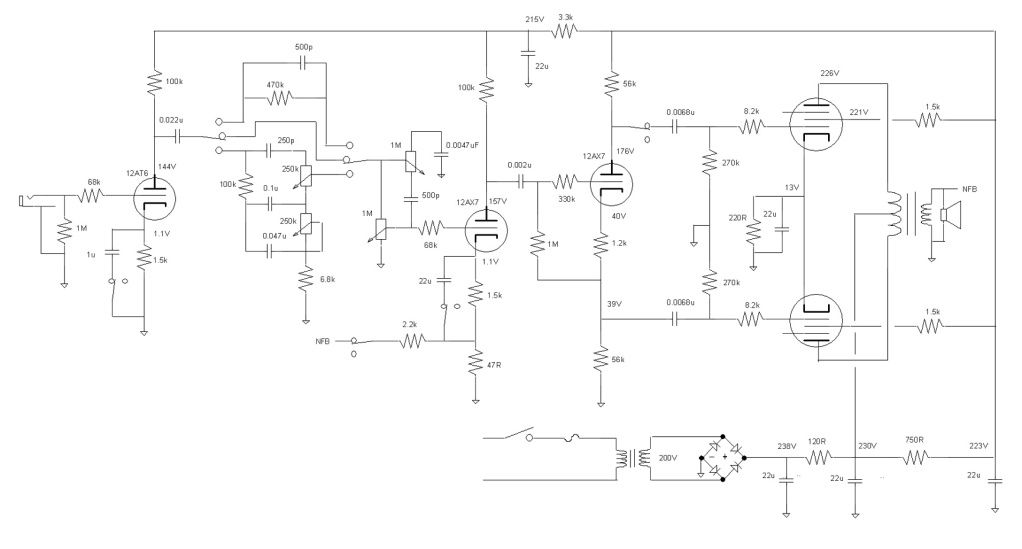Hello everybody,
I have a self-made 4 x KT88 amp with a long-tail pair phase inverter, and I've been experimenting with only using half of the output valves. And by half I mean either one side of the wave-form, or the other side. I stumbled across the idea of amplifying only half of the wave-form when I noticed that one day my amp sounded unusually awesome--it turned out that one of the KT-88's had valves had failed. So then I experimented with removing out put valves and noting the results. The guitar signal going into the phase inverter is realatively asmytricaly clipped, and I find that that the amp sounds best when the output valves are removed in a manner that causes an exaserbation of the asymetrical clipping.
Am I right in thinking that by removing one half (one side) of the output valves, the result is that effectively the removed side behaves as though it is in cutoff, and that therefore only 1/2 of the output transformer is used?
If so, is there a way to wire a push-pull output transformer so that all four kt-88's can be wired in parallel without smoking the OT? The Kt'88s will be biased way cold, and so will be in cutoff much of the time.
Funny thing is that I used to be so picky about biasing the output valves preciesly, making sure everything is 'balanced' and hi-fi as much as possible in the output stage. So much for that... the non-balanced output section makes for awesome overdriven sounds even at low volume!
Cheers,
A
I have a self-made 4 x KT88 amp with a long-tail pair phase inverter, and I've been experimenting with only using half of the output valves. And by half I mean either one side of the wave-form, or the other side. I stumbled across the idea of amplifying only half of the wave-form when I noticed that one day my amp sounded unusually awesome--it turned out that one of the KT-88's had valves had failed. So then I experimented with removing out put valves and noting the results. The guitar signal going into the phase inverter is realatively asmytricaly clipped, and I find that that the amp sounds best when the output valves are removed in a manner that causes an exaserbation of the asymetrical clipping.
Am I right in thinking that by removing one half (one side) of the output valves, the result is that effectively the removed side behaves as though it is in cutoff, and that therefore only 1/2 of the output transformer is used?
If so, is there a way to wire a push-pull output transformer so that all four kt-88's can be wired in parallel without smoking the OT? The Kt'88s will be biased way cold, and so will be in cutoff much of the time.
Funny thing is that I used to be so picky about biasing the output valves preciesly, making sure everything is 'balanced' and hi-fi as much as possible in the output stage. So much for that... the non-balanced output section makes for awesome overdriven sounds even at low volume!
Cheers,
A

Comment